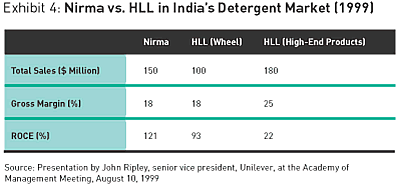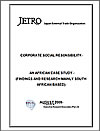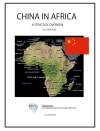BOP Report(Bottom of the Pyramid)
All data are collected in the Fiscal Year of 2008-2009.
5. Tier 4 Pioneer
Hindustan Lever Ltd. (HLL), a subsidiary of Great Britain’s Unilever PLC and widely considered the best-managed company in India, has been a pioneer among MNCs exploring markets at the bottom of the pyramid. For more than 50 years, HLL has served India’s small elite who could afford to buy MNC products. In the 1990s, a local firm, Nirma Ltd., began offering detergent products for poor consumers, mostly in rural areas. In fact, Nirma created a new business system that included a new product formulation, low-cost manufacturing process, wide distribution network, special packaging for daily purchasing, and value pricing.
HLL, in typical MNC fashion, initially dismissed Nirma’s strategy. However, as Nirma grew rapidly, HLL could see its local competitor was winning in a market it had disregarded. Ultimately, HLL saw its vulnerability and its opportunity: In 1995, the company responded with its own offering for this market, drastically altering its traditional business model.
HLL’s new detergent, called Wheel, was formulated to substantially reduce the ratio of oil to water in the product, responding to the fact that the poor often wash their clothes in rivers and other public water systems. HLL decentralised the production, marketing, and distribution of the product to leverage the abundant labor pool in rural India, quickly creating sales channels through the thousands of small outlets where people at the bottom of the pyramid shop. HLL also changed the cost structure of its detergent business so it could introduce Wheel at a low price point.
Today, Nirma and HLL are close competitors in the detergent market, with 38 percent market share each, according to IndiaInfoline.com, a business intelligence and market research service. Unilever’s own analysis of Nirma and HLL’s competition in the detergent business reveals even more about the profit potential of the marketplace at the bottom of the pyramid. (Exhibit 4.)

Contrary to popular assumptions, the poor can be a very profitable market — especially if MNCs change their business models. Specifically, Tier 4 is not a market that allows for the traditional pursuit of high margins; instead, profits are driven by volume and capital efficiency. Margins are likely to be low (by current norms), but unit sales can be extremely high. Managers who focus on gross margins will miss the opportunity at the bottom of the pyramid; managers who innovate and focus on economic profit will be rewarded.
Nirma has become one of the largest branded detergent makers in the world. Meanwhile, HLL, stimulated by its emergent rival and its changed business model, registered a 20 percent growth in revenues per year and a 25 percent growth in profits per year between 1995 and 2000. Over the same period, HLL’s market capitalisation grew to $12 billion — a growth rate of 40 percent per year. HLL’s parent company, Unilever, also has benefited from its subsidiary’s experience in India. Unilever transported HLL’s business principles (not the product or the brand) to create a new detergent market among the poor in Brazil, where the Ala brand has been a big success. More important, Unilever has adopted the bottom of the pyramid as a corporate strategic priority.
As the Unilever example makes clear, the starting assumption must be that serving Tier 4 involves bringing together the best of technology and a global resource base to address local market conditions. Cheap and low-quality products are not the goal. The potential of Tier 4 cannot be realised without an entrepreneurial orientation: The real strategic challenge for managers is to visualise an active market where only abject poverty exists today. It takes tremendous imagination and creativity to engineer a market infrastructure out of a completely unorganised sector.
Serving Tier 4 markets is not the same as serving existing markets better or more efficiently. Managers first must develop a commercial infrastructure tailored to the needs and challenges of Tier 4. Creating such an infrastructure must be seen as an investment, much like the more familiar investments in plants, processes, products, and R&D.
Further, contrary to more conventional investment strategies, no firm can do this alone. Multiple players must be involved, including local governmental authorities, nongovernmental organizations (NGOs), communities, financial institutions, and other companies. Four elements — creating buying power, shaping aspirations, improving access, and tailoring local solutions — are the keys to a thriving Tier 4 market. (See Exhibit 5.)
Each of these four elements demands innovation in technology, business models, and management processes. And business leaders must be willing to experiment, collaborate, empower locals, and create new sources of competitive advantage and wealth.
目次
- 1. Reperceiving Business from the Bottom Up
- 2. Bop in Brief
- 3. Four Consumer Tiers
- 4. The Invisible Opportunity
- 5. Tier 4 Pioneer
- 6. Creating Buying Power
- 7. Shaping Aspirations
- 8. Improving Access
- 9. Tailoring Local Solutions
- 10. Putting It All Together
- 11. A Common Cause
- 12. BOP Experiments in the Field
- 13. A BOP Typology
- 14. What's Next for BOP?
- 15. How to Get Started: The Conceptual Framework for BOP Innovation
- 16. BoP Conferences
- 17. Case Studies and Relevant Reference Material
- Bibliography




